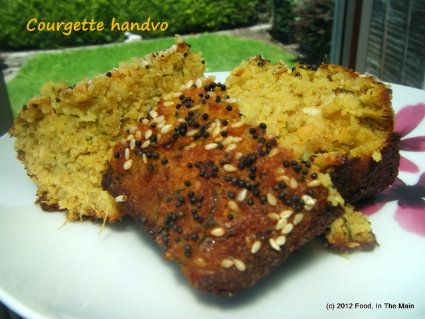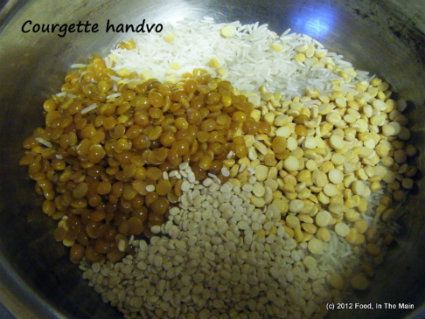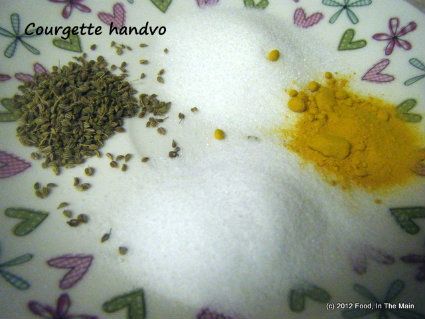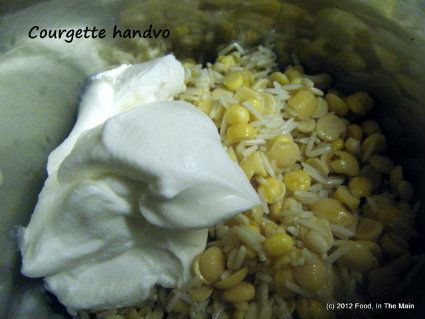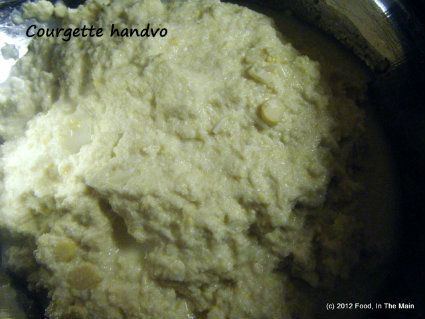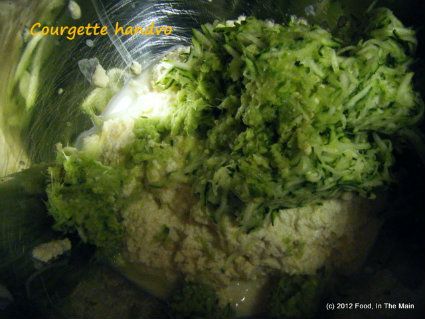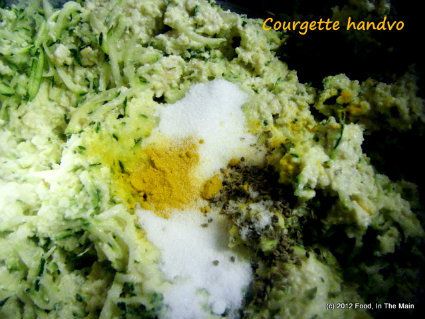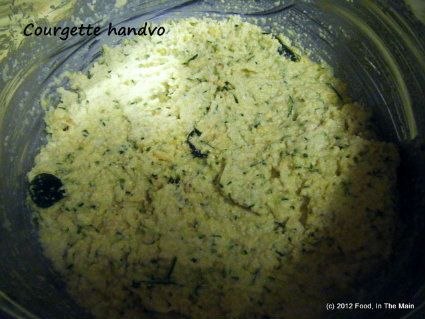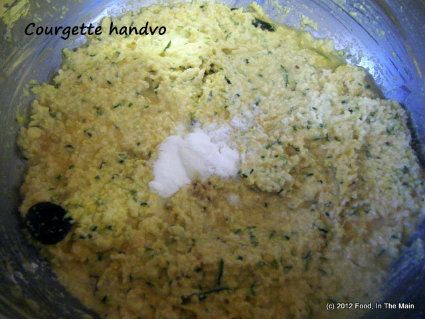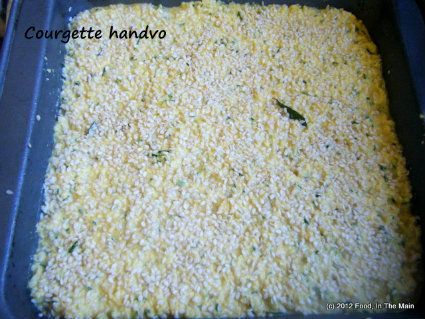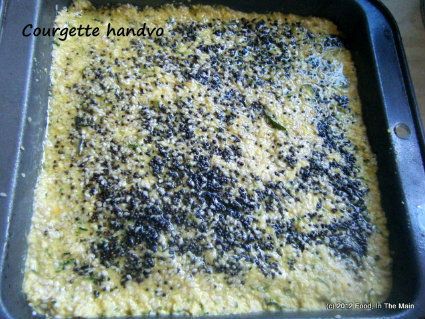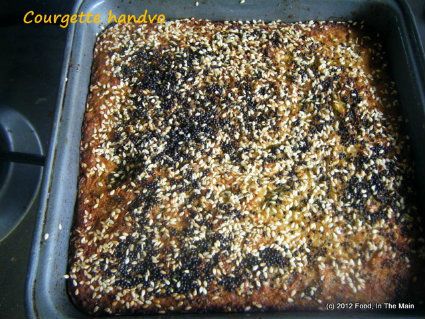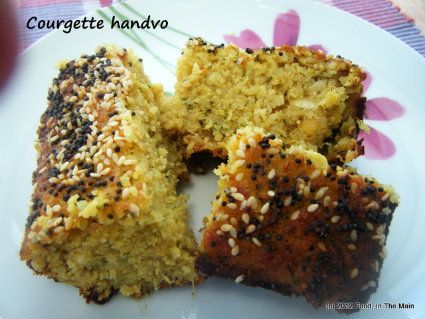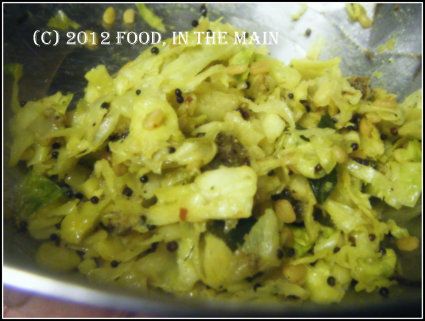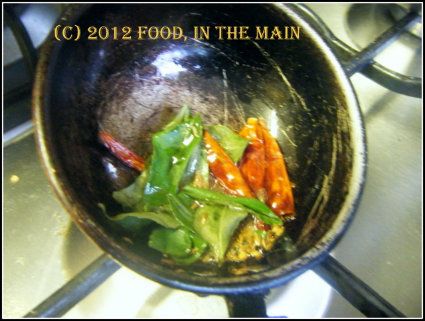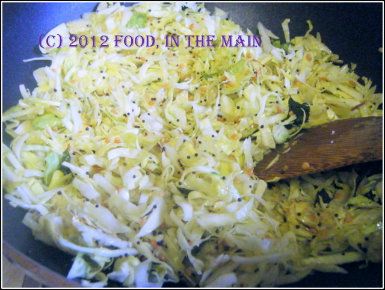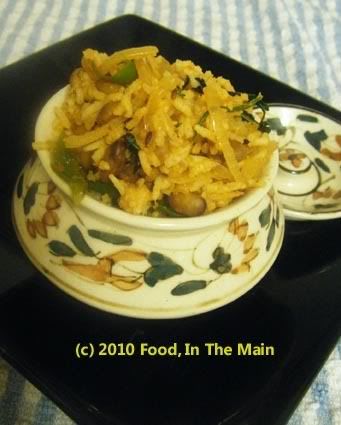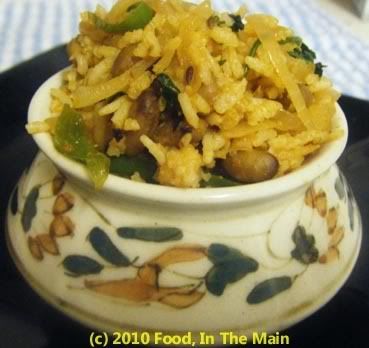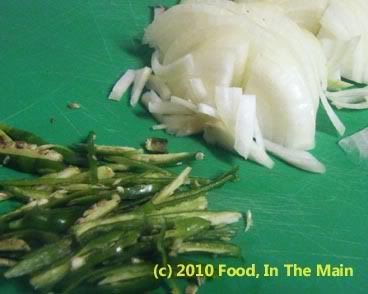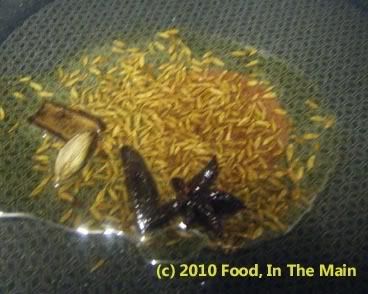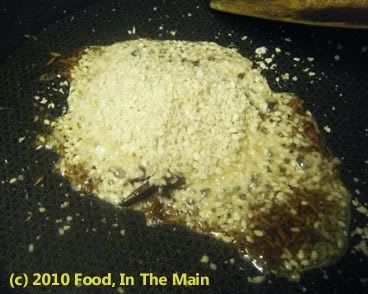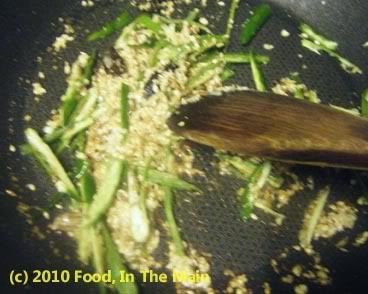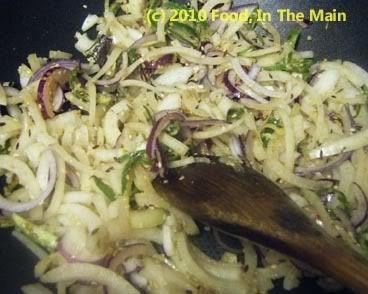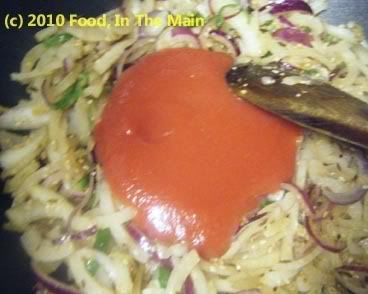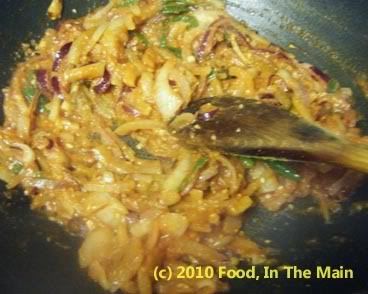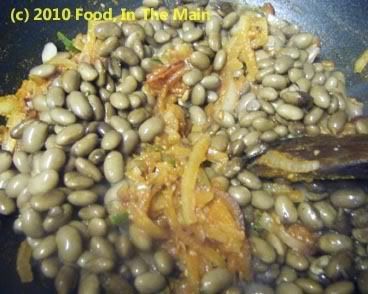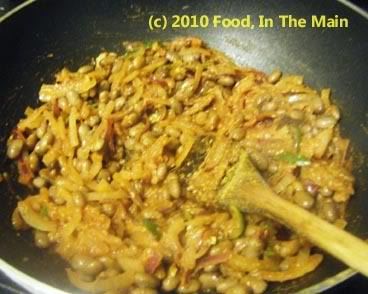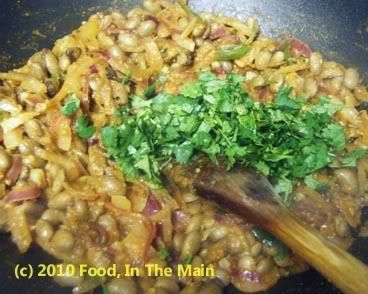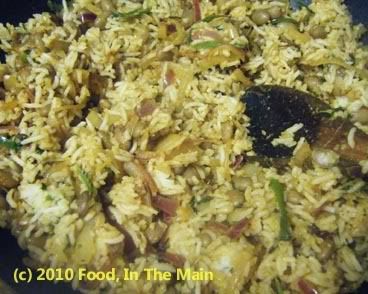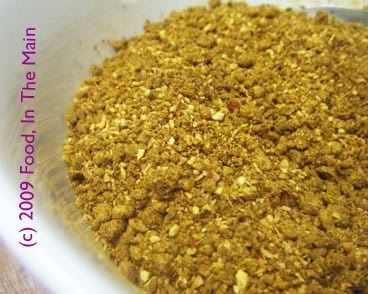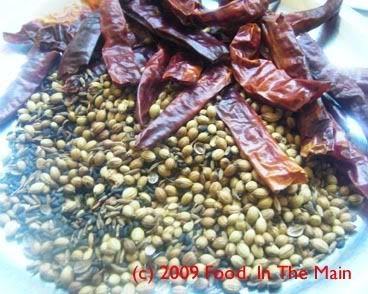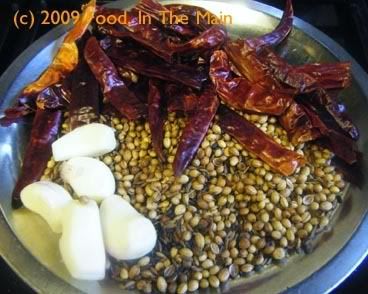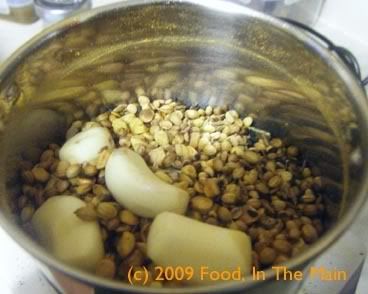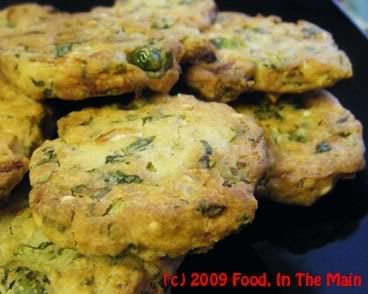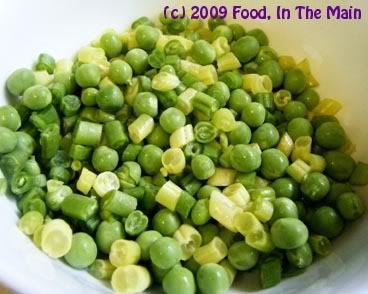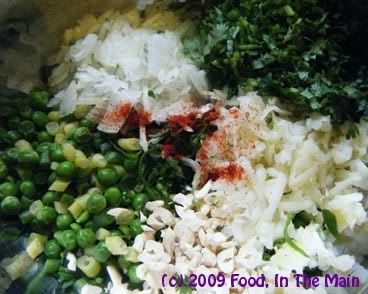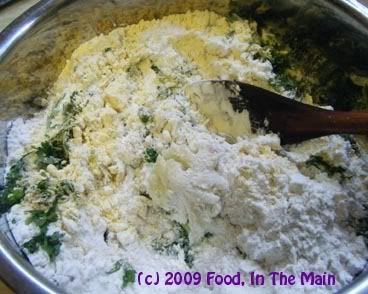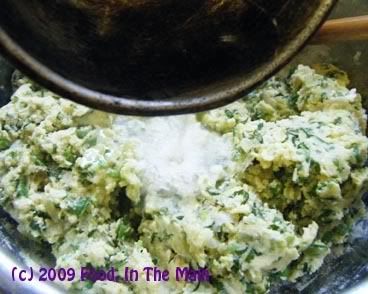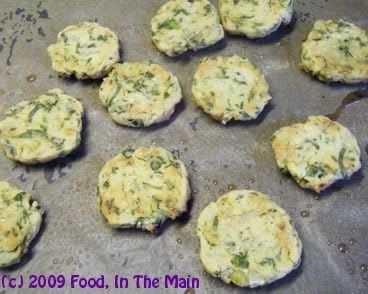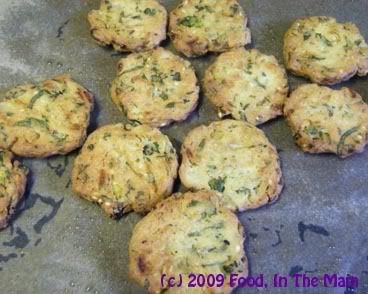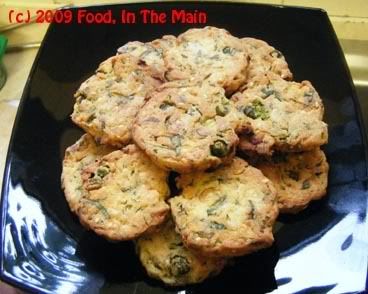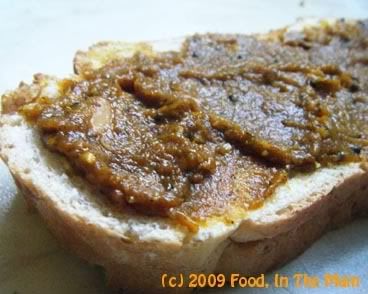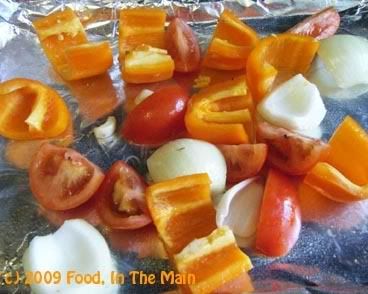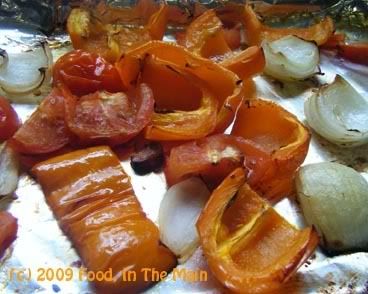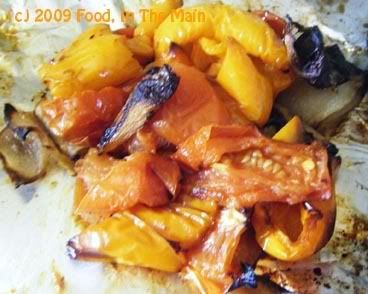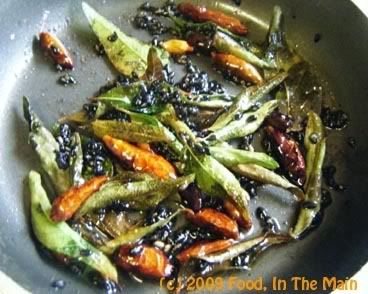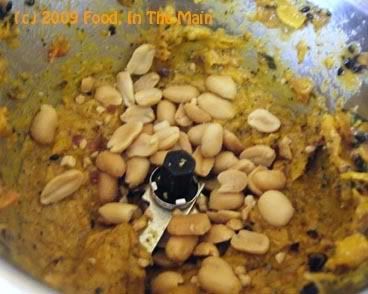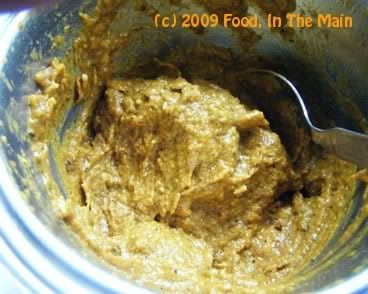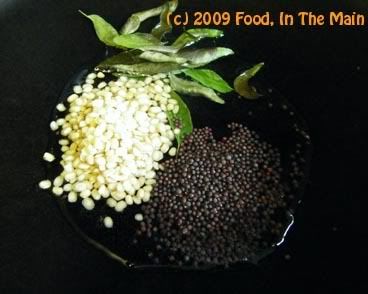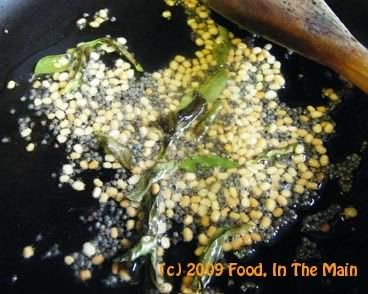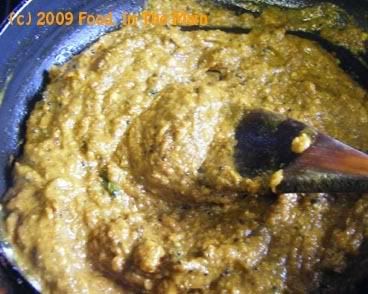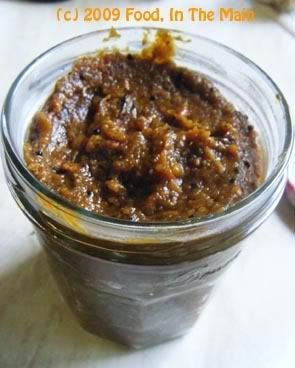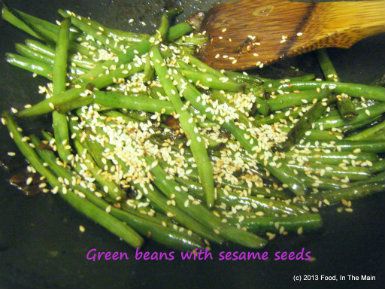
This is a wonderful recipe for green beans. I made it for Pete with the idea that it would make a nice side dish to go with his prawn stir-fry (that I cooked, but the recipe for that doesn't feature here because this is a vegetarian - well, eggitarian - blog), but in the event, he only got the smallest taste of it, because I scarfed most of it myself.
I may have mentioned in previous posts about my love for tender fresh green beans. For someone who can eat a large bowl of plain boiled green beans, sometimes lightly salted, sometimes tossed with good olive oil and sea salt, or in any number of gorgeous Indian ways... this recipe, with its salty umami sesame seed-y garlicky flavours, was just too good to resist. Pete's not crazy about green beans (they're GREEN, man, they're VEGETABLE-Y!) but he made a pretty good effort at taking them away from me. Too bad for him that nobody - nobody! - gets between me and my green beans. Not even Pete. Try this and see if you don't feel the same way about them.
Recipe for: Green beans with sesame seeds
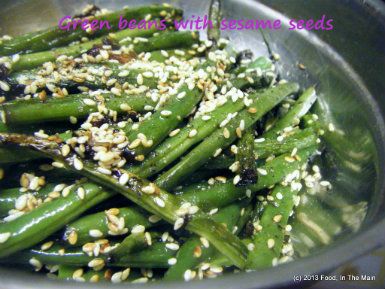
Ingredients:
1/4 kg (250gm) green beans, topped and tailed
1 tsp peanut/vegetable oil
1 tbsp sesame oil
1-2 tbsp soy sauce
1 fat clove garlic, thinly sliced
1 tablespoon sesame seeds
Method:
1. Place the green beans in a saucepan and pour boiling water over to cover, then continue to cook them over high heat for 3-4 minutes till parboiled. Drain the water and reserve the green beans (you can use the cooking water for making soup with, or to make chapati dough).
2. Toast the sesame seeds in a little pan until they puff up and start turning colour. They may pop all over the place while toasting, so if you have a splatter shield, use it. Reserve the toasted seeds.
3. Heat a large pan or wok over medium heat. Pour in the peanut/vegetable oil and add the sliced garlic, cook for about a minute on medium heat, but don't let it brown.
4. Toss in the parboiled green beans and sesame oil. Stir the beans to coat with oil.
5. Cook for about 5 minutes, then add soy sauce and stir frequently on high heat for about 5 minutes.
6. Stir in toasted sesame seeds and serve immediately. This is very good as a side with Chinese-style meals. Or just eat as a snack.

